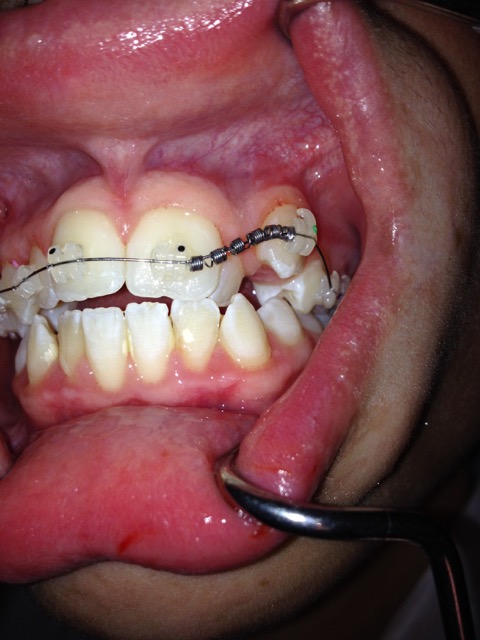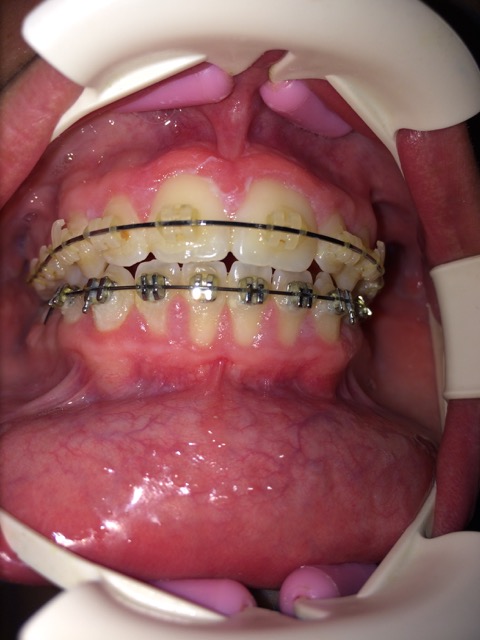Orthodontics is a dental specialism that deals with the correction of poor positioning of the jaws and teeth in order to optimize the balance between how the teeth engage and the structure of the bones. The final objective is functional and aesthetic. Orthodontics in everyday practice enables the correction of what are known as malocclusions. A malocclusion is by definition an alteration of how the teeth engage one another, which is linked to abnormal tooth growth. The most common result particularly in young people is a change in the neuromuscular balance, which could lead to interruptions in growth.
Causes of malocclusions:Genetic causes, growth and functional causes The combinations between these three causes are therefore complex and a balance between these anomalies will enable the orthodontist to carry out the best choice of therapy. The principle of orthodontics is tooth movement thanks to the application of a long-term force on the teeth enabling them to be moved. Orthodontics in this context contributes to good oral health as, for example, well-aligned teeth are easier to clean. Orthodontic practice is generally aimed at young people and can be crucial in re-establishing proper chewing, phonation, breathing, swallowing and growth. This treatment, normally commenced in the transition period between childhood and adolescence will provide real wellbeing by improving patients’ essential functions and enhancing social image. This treatment can however be offered more often to adults who benefit increasingly from this type of rehabilitation. We implement the following in order to achieve this:
- Removable fixtures
- Semi-removable fixtures
- Permanent fixtures
- Bone anchors
- Maxillofacial surgery
- Support fixtures
Treatment generally takes place in three phases:
- 1) Dental-facial orthodontics: this involves removable fixtures and deals with the anatomical correction of bones and also involves the correction of certain functions such as tongue posture.
- 2) Orthodontics: this corrects the position of the teeth using permanent or bonded fixtures that remain in place throughout the entire treatment. The rings of the permanent fixtures are bonded to the tooth using the same adhesive as for treating caries and is perfectly biologically tolerable.
- 3) Support: aims to maintain the new position achieved by the teeth and finally, a treatment avoiding any kind of relapse. The fixtures attached to the teeth will make dental hygiene more difficult. The result is demineralization of the enamel often visible as off-white stains. It is clear that good motivation to maintain the teeth and the fixtures is necessary throughout the entire treatment.
Multi-attachment fixtures comprise the following elements:
- 1) Dental-facial orthodontics: this involves removable fixtures and deals with the anatomical correction of bones and also involves the correction of certain functions such as tongue posture.
- 2) Orthodontics: this corrects the position of the teeth using permanent or bonded fixtures that remain in place throughout the entire treatment. The rings of the permanent fixtures are bonded to the tooth using the same adhesive as for treating caries and is perfectly biologically tolerable.
- 3) Support: aims to maintain the new position achieved by the teeth and finally, a treatment avoiding any kind of relapse. The fixtures attached to the teeth will make dental hygiene more difficult. The result is demineralization of the enamel often visible as off-white stains. It is clear that good motivation to maintain the teeth and the fixtures is necessary throughout the entire treatment.
Multi-attachment fixtures comprise the following elements:
- The attachments or platelets are pellets bonded to the tooth with the aim of resetting them individually.
- The arch:
It is this that provides the necessary force to move the teeth. A nickel-chrome arch is less elastic than a nickel-titanium arch for example. Therefore, the nature and the choice of metal are decisive in the choice of therapy. - Ligatures:
These elastic rims fasten the arch with the attachment and may also consist of brass and enable the arch to be tightened securely in the attachment.



